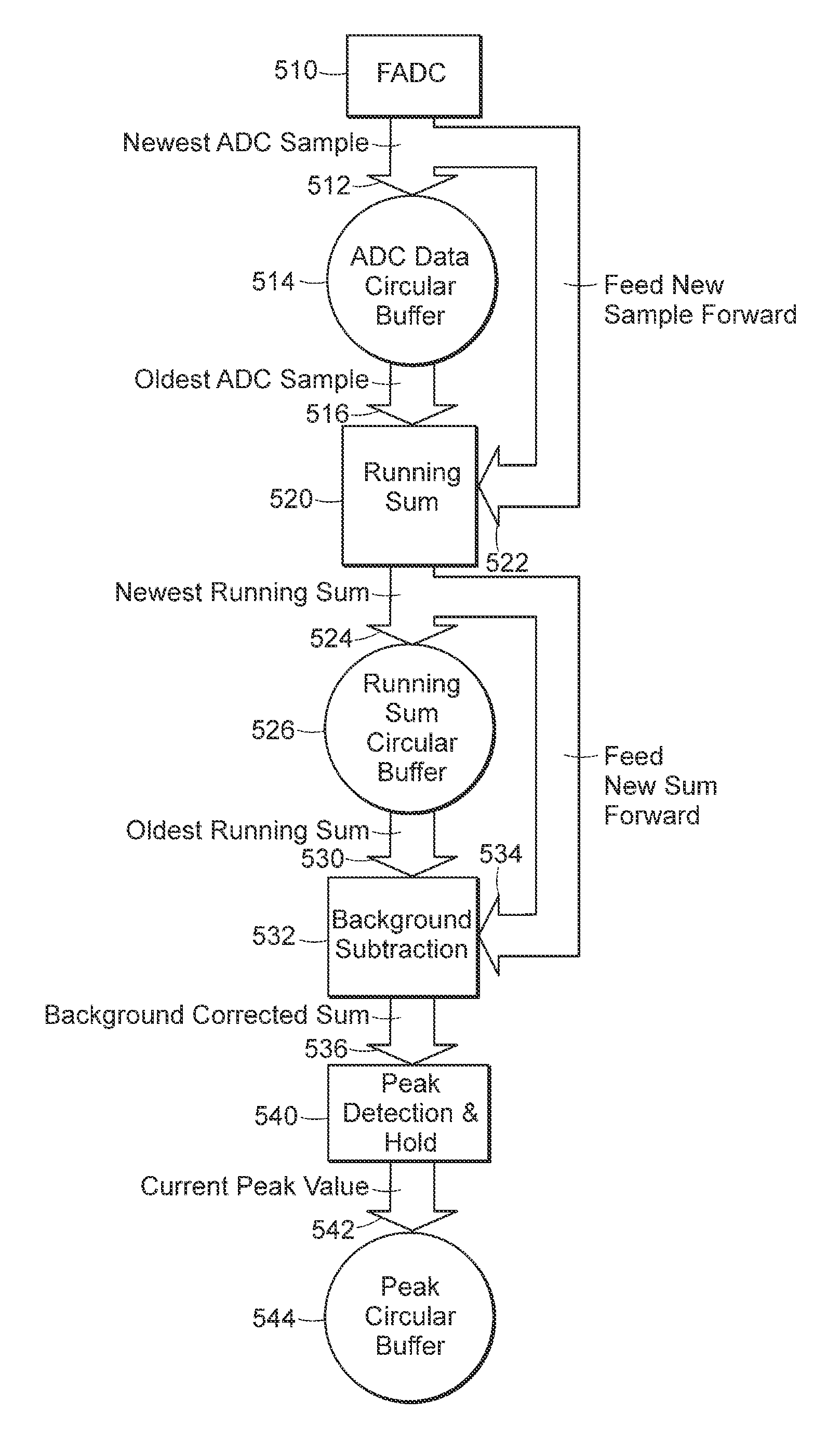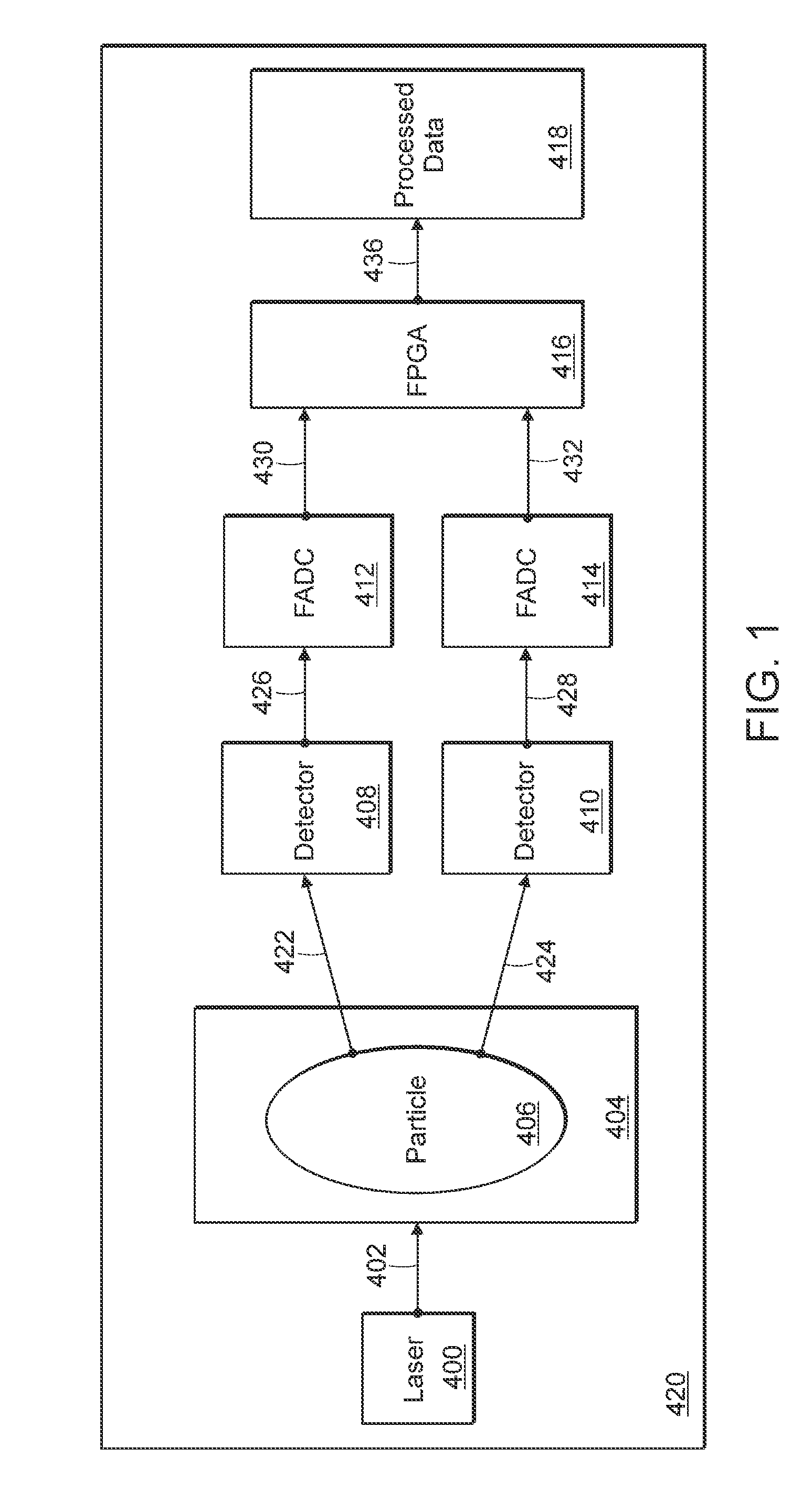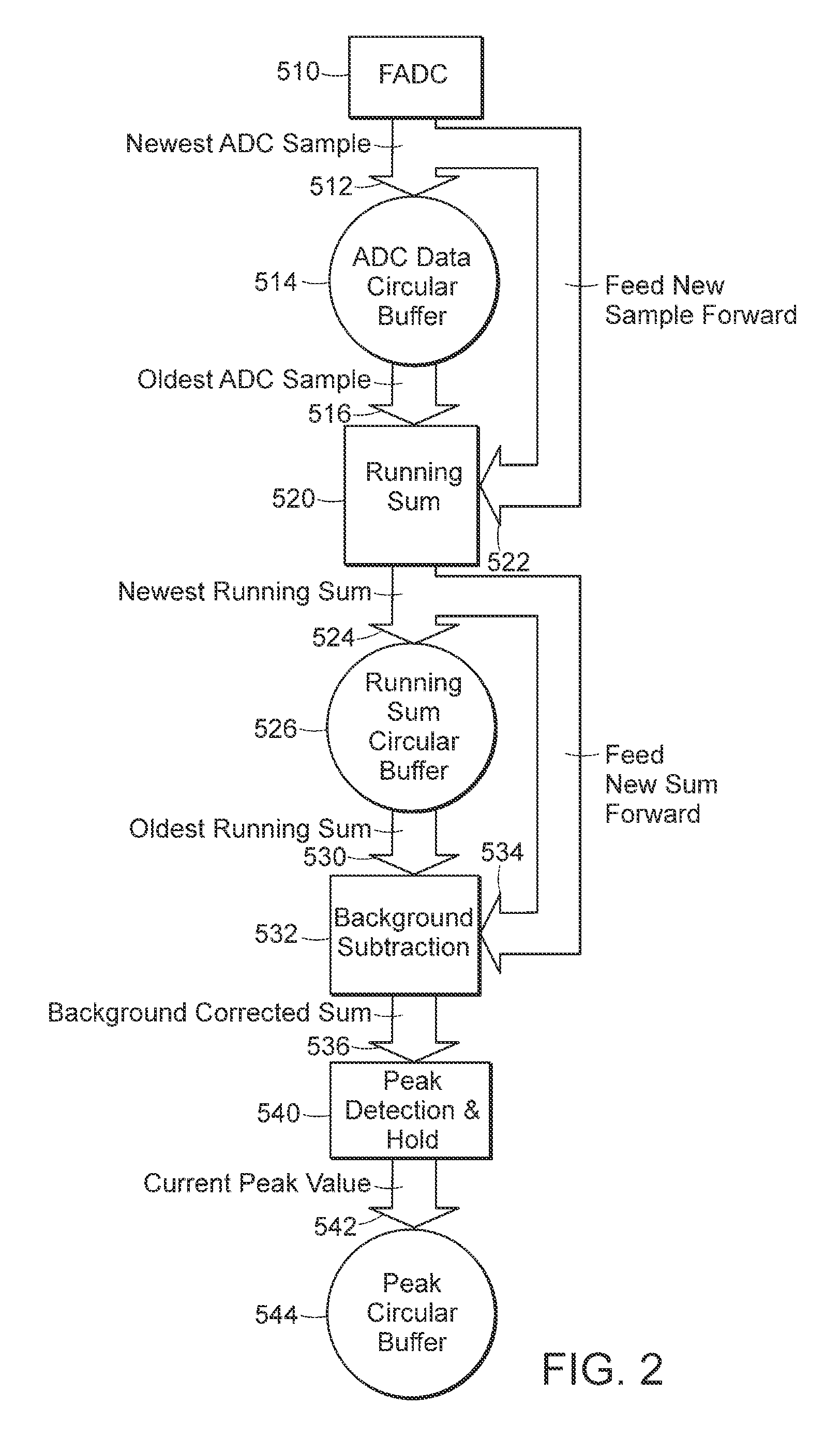System and method for managing data from a flow analyzer
a flow analyzer and data technology, applied in transmission systems, instruments, code conversion, etc., can solve problems such as inability to overrun buffers, and achieve the effect of increasing the number of channels
- Summary
- Abstract
- Description
- Claims
- Application Information
AI Technical Summary
Benefits of technology
Problems solved by technology
Method used
Image
Examples
Embodiment Construction
[0027]Referring to FIG. 1, a schematic is shown for a functioning flow analyzer 420, for example, a flow cytometer. Laser light beam 402 from laser 400 is shown to impinge on a particle 406 as it passes through examination zone 404 of a flow cuvette. Light 422, 424 that is scattered, emitted (for example, fluorescence emission), refracted, or otherwise produced is then sensed by one or more detectors 408, 410, which then transmit their data 426, 428 to their respective FADC (filtering, amplification, and digital conversion) units 412, 414. The FADCs then transmit 430, 432 their respective resulting digitized data to a Programmed Logic Device (PLD) such as an FPGA, ASIC or other data processor 416 for final data processing. Such a PLD is a semiconductor device having logic components for performing logic and arithmetic operations with or without combinations with processors such as DSP's. Results of processing by the FPGA or other processor 416 are then output 436 as the final, proce...
PUM
 Login to View More
Login to View More Abstract
Description
Claims
Application Information
 Login to View More
Login to View More - R&D
- Intellectual Property
- Life Sciences
- Materials
- Tech Scout
- Unparalleled Data Quality
- Higher Quality Content
- 60% Fewer Hallucinations
Browse by: Latest US Patents, China's latest patents, Technical Efficacy Thesaurus, Application Domain, Technology Topic, Popular Technical Reports.
© 2025 PatSnap. All rights reserved.Legal|Privacy policy|Modern Slavery Act Transparency Statement|Sitemap|About US| Contact US: help@patsnap.com



